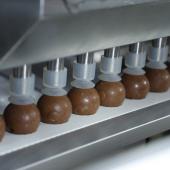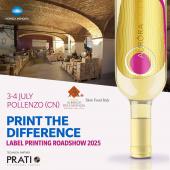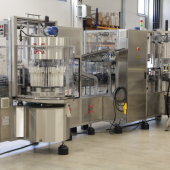More efficiency and less wastage on a robotized packaging line
A vision system and Omron Delta robots guarantee excellent performance for a multi-color sweet bell pepper packaging installation at Combilo, with productivity exceeding conventional lines by as much as 30%. The protagonists and the results achieved.
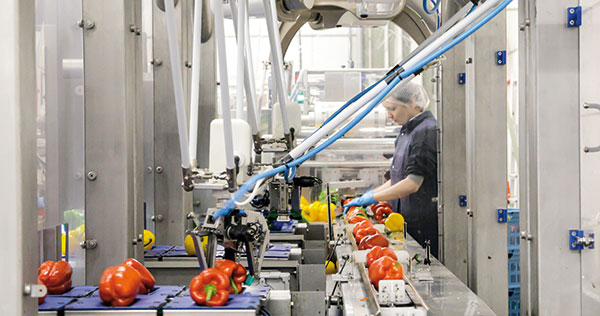
Combilo of Waddinxveen (Netherlands) is a concern that imports, exports, preserves, packages and distributes fresh fruit and vegetables through a network of European resellers and wholesalers. Some products are supplied loose, while many others, especially tomatoes, peppers and pickles, are packaged.
Marcel Villerius, Production Manager Combilo and head of a packaging division operating various lines, has recently worked to improve the facility’s overall efficiency, for example by modifying the division’s layout in order to optimize internal logistics, and seeking the right solutions for automating processes in optimal fashion.
The conventional line. And so, in 2015, in order to enhance the efficiency of its packaging operations, Combilo installed an in-line robot that produces pepper triple-packs: one red, one yellow and one green. The division runs five lines that execute millions of packagings per year. «Generally speaking, a conventional line requires seven operators» explains Villerius. «One fills the trays with peppers in the three colors, while three others position them manually on the conveyor in the correct order. The products are then conveyed in groups of three to a flow packer that wraps them in film. An operator next to the packaging machine checks the feed and removes any rejects. Finally, two operators work at the end of line, placing the triple packs of peppers in crates and stacking them on pallets».
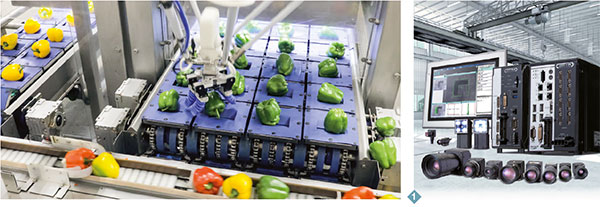
1 - Omron’s FH vision system is one of the principal components making up the heart of the pepper packaging line’s automation.
The robotized line. Combilo decided to purchase a robot-assisted line to make packaging the triple-packs of bell peppers more efficient. «The automated line essentially does the same thing as a traditional line» says Jeroen Bugter, Director of EasyPack Technologies, the company that developed the robot-assisted line. «An employee fills the trays with bell peppers of each color, before three robots assume the role of the employees who place the bell peppers on the belt. The robots pick up the bell peppers and correctly position them on the belt in the correct color order, before they are sent through the flow packer. The process following the packaging machine stage remains the same».
«Picking up items by hand results in packages that are too heavy and contain too much product or packages that are too light and have to be rejected» explains Villerius, remarking on how the new solution has also enabled a brilliant solution to the wastage problem.
«Discarded packs need to be opened manually in order to put the peppers back at the start of the line, with an enormous waste of time and additional handling that negatively impacts product quality. Now the load cells and weight converter control the robot, making it possible for the vast majority of packs to have the right weight, reducing not only wastage but also the amount of material consumed per pack».
The target weight is 500 g per pack. Load cells are installed on the belts that convey the peppers to the robots, which transmit the weight of the individual peppers to a central terminal. The first two robots can pick peppers choosing between two belts, while for the last color there are four to choose from, and the robots thus have a wider choice for getting as closer as possible to 500 g.
Following weighing, a vision system featuring three video cameras communicates position and orientation of the peppers to the system, as well as the shape of each stem. This information enables precisely calculating how much the products should be rotated so that they are correctly positioned on the belt. According to Villerius, bell peppers are especially difficult to package since their shape varies widely and the stems are hard and must be made to face inward to avoid tearing.

2 - The washdown version of Omron’s R6Y Delta-3 robot
The equipment used
Two firms were drafted to develop the packaging line: principal EasyPack Technologies (which designs and builds packaging machines for the food sector) and Rons Electronics Supplies, its customary electronics and control systems partner. Effectively, the entire control system and robotic application, with the exception of the load cells and the weighing unit, have been supplied by Omron.
In particular, a washdown version of Omron’s R6Y Delta-3 robot was selected for accurate cleaning (a crucial issue for the food sector). Each robot features four servo drives that control three robotic arms and a rotation axis.
Omron also supplied the FH-5010 vision system with three cameras and the controllers for the conveyor belts. Each robot has its own control box for the servo drives, and the central control box contains no fewer than 27 frequency controllers for the belts, as well as a NJ501 robotics controller.
The latter processes information about weight, position and belt speed, thus steering the three delta robots. An encoder is installed on the flow packer to control the speed of the robots, ensuring that they run at exactly the same speed as the packaging machine. What is special about this is that all Omron components and controllers involved in the installation exchange data with each other via an EtherCAT network.
Rons Electronics Supplies used the Sysmac Platform supplied by Omron to configure the installation. According to Director Ron Schinkel, this is an efficient and flexible way of programming how the machine is monitored and controlled. The robots and the packaging line are operated using a touchscreen that allows the operator to configure and control parameters such as weight, position, and belt speed through simple pictograms. The display also shows error messages.













